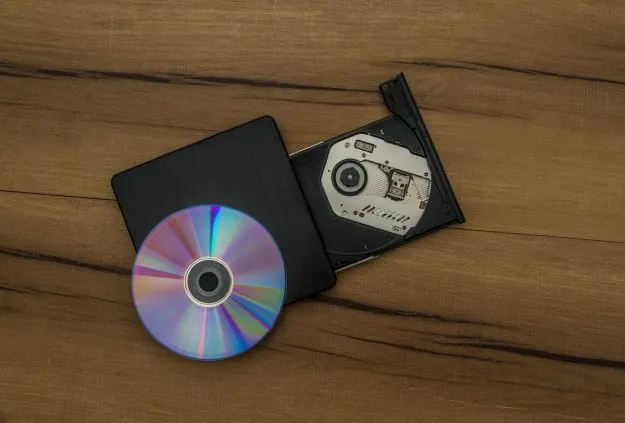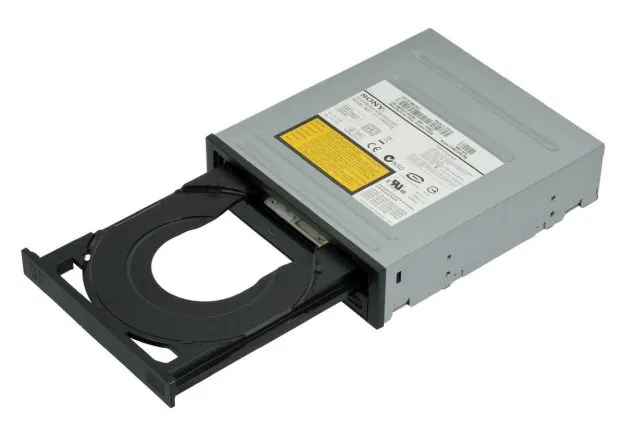With most laptops shipping without a CD drive nowadays, a problem can potentially arise when it comes to the installation of software that you have on a physical disc. So, how do you install software on a laptop without a CD drive?
Software can be installed on a laptop without a CD drive using an external CD/DVD drive, a USB data flash drive, a network, ISO, or simply an exe file that you download over the internet. The latter is the easiest method to achieve your goal.
The lack of a CD drive in a laptop comes from manufacturers wanting to reduce the weight of the laptop. But the truth is that the function of a CD drive has become almost unnecessary. It is not a massive limitation to no longer having a CD drive installed onto your laptop.
There are many methods to install software without it and we’re going to go through all your options, in detail, below.
How to Install Software on a Laptop That Has No CD Drive?
1. Download the program online
Installing software on a laptop, and even a PC, without a CD drive has never been more accessible. I barely use my CD drive to install software today (yes, I still have one on my desktop computer – but not my laptop).

If you have an internet connection like me, I visit the software’s official website, download the latest exe file, and install it from there.
Not only does this render a CD drive unnecessary, but the software is also more up to date than the one on the CD drive in most cases.
For example, I work with a 3D animation and modeling software called Blender, which you can only obtain through downloading its exe file from the official website.
Afterward, I double-click the exe file to open it. Upon opening it, the installation wizard, with detailed instructions included, starts. Within the installation wizard, follow its instructions, and you will have your software installed within minutes!
If you worry about not having enough space on your laptop, consider investing in a larger SSD. Or simply delete the install file from your device after installing the program.
2. Using an external drive
An external CD/DVD drive is another option to install software that comes stored onto the disc. One can be purchased at your local computer hardware shop or ordered online (affiliate link).
You must plug these external CD/DVD drives into your USB port with the USB cable that comes with the drive; after connecting it to the drive, the installation is finished. All the functionality you would have with an internal CD/DVD drive is available on an external one.

For even more storage, you can also get an external SSD that allows you to keep all those extra files secure.
3. Using an USB flash drive
Before I knew I could download the software from the official website, I used this method below to install Microsoft Office on my laptop without a CD drive.
I went to my other computer that had a CD drive. Afterward, I inserted the disc, and the USB data flash drive. Then I copied all the files, including the hidden files, from the disc to the USB data flash dive.
Lastly, I inserted the USB data flash drive into my laptop without a CD drive, and double-clicked on its Setup.exe file, and proceeded to install the software with its installation wizard.
Of course, this can be used today – but it’s too much of a hassle in most cases. Plus, some CDs have their software protected one way or another as an anti-piracy measure, so you won’t be able to use this method anymore.
Those USB drives have gone a long way in terms of storage. You can now get one of the amazing external HDDs I recommended in a previous article and enjoy heaps of storage space for really low costs.
4. Using a shared network
Making use of a shared network could also be an option. Using a shared folder on a cloud drive, such as OneDrive or Google Drive, at home or work, is helpful to install software from.
With this method, you double-click on the relevant exe file or ISO file (more on that later) from the shared folder. You then proceed to install the software on your pc.
This method is beneficial, especially in a work environment. In many cases, your work requires you to install specific up-to-date software on your pc. This method makes it easy to install the required software without scouring the internet for the software you need.
5. Using an ISO file
Finally, the use of an ISO file is also handy to install the software. This file is simply an archive file that acts the same as a CD or DVD. ISO files contain the same data as a CD or DVD. The only difference is that, unlike a CD or DVD, it is entirely digital.
ISO files are a digital alternative to installing data from a CD or DVD onto a PC. Many people even use these files to create digital backups of their software stored on a CD or DVD.
Many official websites of software even include an option to download an ISO file that contains their software. If you use an operating system like Windows or Mac, they are easy to use.
On Windows 8 or later, right-click on the ISO file and select Mount. Your computer will now see it as if it were a physically inserted disc. Afterward, it will have the same functionality as a physical disc. Essentially it is just a digital CD or DVD.

On Mac, double-click on the ISO file. Afterward, it would be mounted and ready to use. Alternatively, you could go to the Disk Utility than File and finally click on Open Disk image. Afterward, locate the ISO file and mount it. With both options, you can now proceed to use it as if it were a DVD or CD inserted into your computer.
It is just as easy to unmount, or eject, the ISO file on both Windows and Mac. On Windows, right-click on the mounted ISO file in This PC and click eject. On Mac, right-click on the mounted ISO file, which should be on your desktop, and click eject. That is all that you need to do to unmount or eject an ISO image.
With all these options available, it has become so easy to install software without a CD drive. Of course, the easiest method for most pieces of software nowadays is to search for it online and download it from the official website.
If that is not an option, investing in an external CD drive is the best way to go.
What are the Best External CD/DVD Drives?
If you would like to buy an external CD/DVD drive to install software, here are some of the best options available on the market below (note: all the links below are affiliate links):
What is the Best Software to Mount Your ISO files?
Here is a list of the best software to mount your ISO files:
Conclusion
With so many options to install software, lacking a built-in CD Drive in your laptop or even desktop computer should be the least of your worries.
Today, you can download the exe or ISO file to install software on most software’s official websites. If you need to install software from a disc, purchase an excellent external CD/DVD drive with the same functionality as a built-in one. Finally, use a shared file on a network.
In other words, getting the software to run on your laptop without a CD drive has never been more straightforward.

